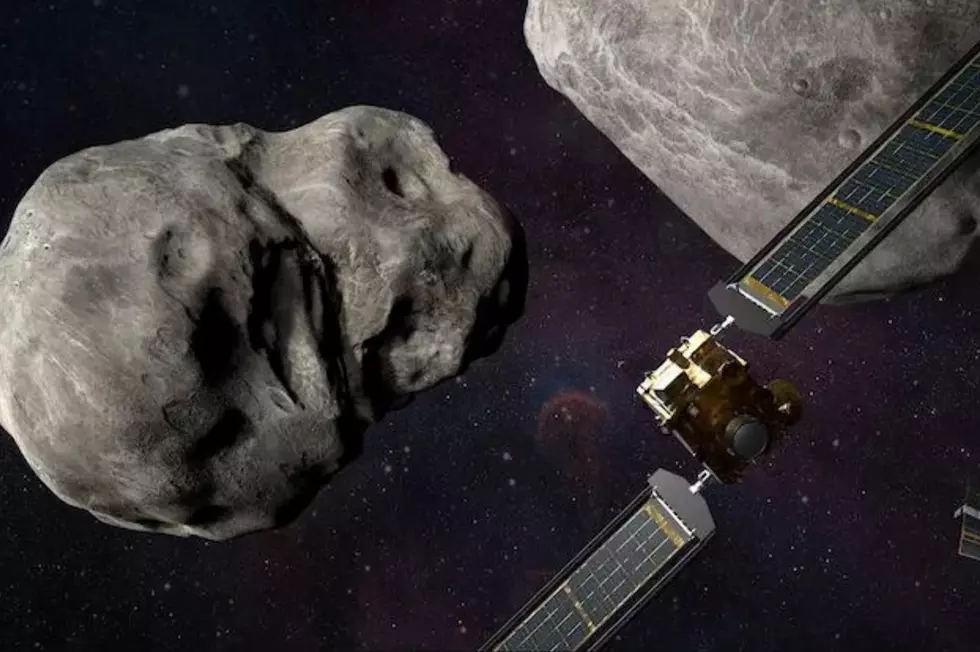
How To Watch As NASA Smashes Into An Asteroid
Tonight, Monday, September 26, NASA is going to purposely smash into an asteroid and you'll have a front seat to watch as it happens.

This evening, NASA's Double Asteroid Redirection Test spacecraft, or DART for short, is set to smash into a small asteroid called Dimorphos. Dimorphos is the moon of a larger space rock called Didymos.
This is not some sort of scary Armageddon type situation with a fast moving asteroid headed toward Earth to obliterate all of of us. Dimorphos and Didymos pose no know threat to Earth, and are actually quite small, with Dimorphos measuring just 525 feet across and Didymos measuring only 2,560 feet. Also, the little moonlet and its larger space rock are located 6.8 million miles from earth.
Why then is NASA's DART spacecraft set to smash right into Dimorphos? Because in 2021, NASA launched its Double Asteroid Redirection Test (DART) to test out various techniques that could one day be used for planetary defense.
This evening at exactly 7:14 p.m. ET, NASA'S DART spacecraft will deliberately smash into Dimorphos at an estimated speed of about 17,500 miles per hour.
NASA will monitor how the collision goes and the results will, both NASA and other space agencies hope, help give ideas of ways to keep the planet safe from futer asteroids that may actually pose a threat to Earth.
If you remember from history class, a massive space rock crashed off the Yucatan Peninsula 66 million years ago and caused catastrophic damage which lead to the global extinction of dinosaurs. The goal is to prevent such catastrophic events from ever happening again and NASA's DART will play a huge part in making sure that happens.
If you'd like to watch as NASA's Dart spacecraft smashes into Dimorphos, NASA Television will begin broadcasting coverage beginning at 6:00 p.m. If you'd rather not watch the broadcast of the mission and would rather watch a stream of photos from the spacecraft as it closes in on the asteroid, those will be shown on NASA’s media channel starting at 5:30 p.m.
NASA television can be streamed several ways including on your computer or phone, through YouTube, through social media, or through your television on a third party app or service. Check out all of the ways that you can watch the impact tonight, here.
LOOK: The most expensive weather and climate disasters in recent decades
LOOK: The most extreme temperatures in the history of every state
More From Big Frog 104


![New York’s Stunning Fall Foliage Can Actually Be Seen from Space [PICS]](http://townsquare.media/site/497/files/2022/10/attachment-RS50415_GettyImages-1020250788-scr-1.jpg?w=980&q=75)






